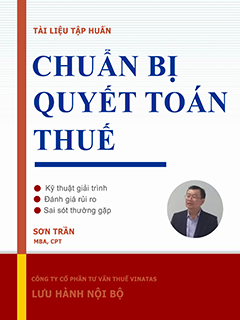Mọi người xem giúp e bài này nhất là nhân tỷ giá hạch toán hay thực tế, fần giá CIF, cp vận chuyển và bảo hiểm ngoài nứơc là bên nứôc ngoài chịu mà mình nộp vs.
xuất kho lô hàng 88.000.000 đi xuất khẩu theo giá CIF/osaka là 100.000$.
+ cp chuyển xuống cảng đã chi bằng tiền mặt 21.000.000đồng(trong đó VAT 1.000.000đồng).
+ cp vận tải ngoài nước là 10.000$, phí bảo hiểm 6000$. tiền cp vận chuyển và bảo hiểm đã thanh toán bằng tiền gửi ngân hàng($).
+ Lô hàng trên đã hoàn thành việc xuất khẩu. thuế xk 5%. Đơn vị đã nộp thuế xk bằng tiền gửi ngân hàng VND. Ngân hàng đã chuyển chứng từ thanh toán và báo có toàn bộ tiền hàng xuất khẩu
a- Nợ TK 632: 88.000.000
Có TK 156: 88.000.000
b - Nợ TK 641: 20.000.000
Nợ Tk 133: 1.000.000
Có TK 111: 21.000.000
c - Nợ TK 131: (10.000$ + 6.000$) * 16.000
Có TK 112(2) : : (10.000$ + 6.000$) * 16.600
Đt ghi đơn: Có TK 007: 16.000$
d - Nợ TK 131: (100.000$ - 16.000$) * 16.000
Có TK 511: (100.000$ - 16.000$) * 16.000
e - Nợ TK 511: (100.000$ - 16.000$) * 16.000 * 5%
Có TK 333(3): (100.000$ - 16.000$) * 16.000 * 5%
f- Nợ TK 333(3): (100.000$ - 16.000$) * 16.000 * 5%
Nợ TK 635: 100.000$ - 16.000$) * 600 * 5%
Có TK 112(1) 100.000$ - 16.000$) * 16.600 * 5%
100.000$ - 16.000$) * 16.600 * 5%
g - Nợ TK 112(2): (100.000$ +16.000$) * 16.600
Có TK 515: (100.000$ +16.000$) * 600
Có TK 131: (100.000$ +16.000$) * 16.000
xuất kho lô hàng 88.000.000 đi xuất khẩu theo giá CIF/osaka là 100.000$.
+ cp chuyển xuống cảng đã chi bằng tiền mặt 21.000.000đồng(trong đó VAT 1.000.000đồng).
+ cp vận tải ngoài nước là 10.000$, phí bảo hiểm 6000$. tiền cp vận chuyển và bảo hiểm đã thanh toán bằng tiền gửi ngân hàng($).
+ Lô hàng trên đã hoàn thành việc xuất khẩu. thuế xk 5%. Đơn vị đã nộp thuế xk bằng tiền gửi ngân hàng VND. Ngân hàng đã chuyển chứng từ thanh toán và báo có toàn bộ tiền hàng xuất khẩu
a- Nợ TK 632: 88.000.000
Có TK 156: 88.000.000
b - Nợ TK 641: 20.000.000
Nợ Tk 133: 1.000.000
Có TK 111: 21.000.000
c - Nợ TK 131: (10.000$ + 6.000$) * 16.000
Có TK 112(2) : : (10.000$ + 6.000$) * 16.600
Đt ghi đơn: Có TK 007: 16.000$
d - Nợ TK 131: (100.000$ - 16.000$) * 16.000
Có TK 511: (100.000$ - 16.000$) * 16.000
e - Nợ TK 511: (100.000$ - 16.000$) * 16.000 * 5%
Có TK 333(3): (100.000$ - 16.000$) * 16.000 * 5%
f- Nợ TK 333(3): (100.000$ - 16.000$) * 16.000 * 5%
Nợ TK 635: 100.000$ - 16.000$) * 600 * 5%
Có TK 112(1)
g - Nợ TK 112(2): (100.000$ +16.000$) * 16.600
Có TK 515: (100.000$ +16.000$) * 600
Có TK 131: (100.000$ +16.000$) * 16.000
Sửa lần cuối:











